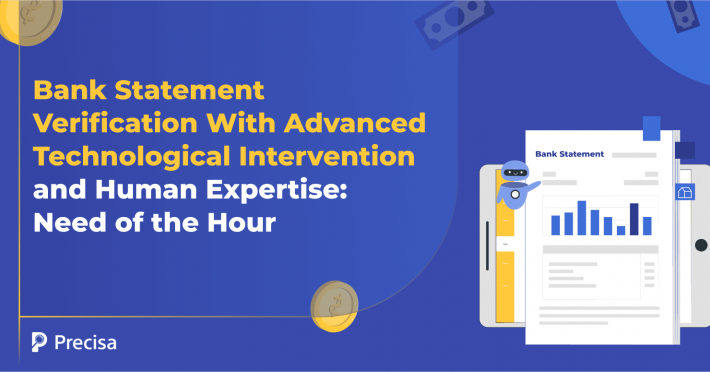8 Best Practices for Conducting Forensic Audits in Lending

The rising incidence of corporate scams has the potential to destabilise Indian businesses and the economy, especially given the high-profile cases, such as the Satyam Computer Services scandal, the PNB fraud, and the IL&FS crisis.
For lending institutions, the risks are even higher. The Reserve Bank of India reported frauds totalling ₹30,252 crore in FY 2022-23, 65% linked to lending operations. These figures highlight the pressing need for stringent forensic audits.
Forensic audits generally use sophisticated analytical tools. These serve as both a response to fraud and a proactive approach to improving transparency and protecting stakeholders.
Let’s go over how the audits can help detect issues such as embezzlement and money laundering, identify anomalies and potential red flags early on.
What is Forensic Auditing in Lending?
In addition to traditional compliance checks, like risk assessment, records checking, and physical audit, forensic audits use advanced analytics and investigative technology to detect manipulation of financial statements.
Moreover, it can reveal frauds in asset valuations, identify complex transaction chains, such as round-trip transactions, and uncover shell companies created for deceptive borrowings.
Recent audits have uncovered significant tax evasion cases. For instance, in February 2025, Skoda Auto Volkswagen India faced a $1.4 billion tax demand for allegedly circumventing import duties.
Forensic audits have prompted organisations to adopt robust governance practices. A study highlighted that audits increase the likelihood of implementing conflict-of-interest policies by 20 percentage points, whistleblower policies by 23 percentage points, and formal CEO compensation approvals by 19 percentage points.
What’s the Cost of Inadequate Forensic Audits Measures?
Indian lending institutions can face severe consequences for oversight. For instance, the RBI imposed penalties summing ₹65.85 crore on 13 banks in 2023 for non-compliance with fraud detection norms.
Beyond monetary penalties that run into millions, lenders may also face:
- Temporary or permanent suspension of lending operations
- Regulatory scrutiny and frequent supervision by RBI or enforced agencies
- Reputational damage affecting market value
- Legal proceedings against key stakeholders
8 Best Practices for Conducting Forensic Audits
Lenders need to combine proactive risk management, advanced technology, and systematic verification practices, such as the following:
1. Prioritise Risk-Based Investigation
Focus on loan types with volatile cash flows or histories of fraud or financial irregularities.
- This includes unsecured lending and sectors prone to shell company abuse. This targeted approach allows auditors to allocate resources effectively.
- Set clear thresholds that trigger automated forensic audits, such as significant deviations in financial metrics, sudden revenue spikes, or unusual collateral valuations.
2. Leverage AI-Driven Transaction Analysis
Deploy data analysis models to analyse large volumes of financial data and flag anomalies.
- Focus on reviewing circular transactions, unexplained fund transfers, or payments to unverified entities. This can include statistical analysis and predictive modelling.
- Investigate complex transaction chains to detect round-trip transactions or operations involving shell companies, which are often used to disguise fraudulent activities.
3. Implement Automated Document Verification
Strengthen due diligence with multi-layered document authentication.
For instance, implement rigorous document verification processes that include authentication of submitted documents against source records like bank records, tax filings, and GST returns. This helps expose alterations or forgery.
Use meta-data analysis to assess digital records and communications for inconsistencies or signs of tampering, such as altered dates or forged signatures.
4. Conduct On-Site Operations Reviews
Validate the legitimacy of borrower operations through physical verification.
You could conduct site visits to confirm the existence, inventory levels, and operational legitimacy of businesses applying for loans. This can help uncover shell companies or front operations.
Review the relationships with suppliers and customers for signs of collusion, such as inflated invoices or phantom vendors.
5. Assess Management Integrity
Conduct background checks and schedule interviews to evaluate leadership integrity and uncover conflicts of interest.
- Background investigations of key management personnel must include their past business conduct and any litigation history. This helps identify undisclosed issues that could affect loan repayment.
- Furthermore, personalise your interviews with relevant employees to gather insights into business practices and transparency in financial decision-making.
6. Integrate Real-Time Compliance and Documentation Monitoring
Automating regulatory adherence will help minimise lending risk levels.
- Follow established forensic accounting standards and guidelines (ACFE Fraud Prevention Checklist and RBI Regulations) to ensure audit findings are admissible in legal proceedings.
- Keep a comprehensive audit trail with timestamps and stakeholder access logs for all procedures, findings, and communications. This is crucial for supporting legal actions if fraud is detected.
7. Adopt Cloud-Based Forensic Audits Tools
Leverage modern analytics platforms, like Precisa, to improve scalability, performance, accuracy, and data security.
For instance, Precisa’s AI-powered dashboard with 3-level analysis improves real-time monitoring of borrower financial health pre- and post-disbursement.
It also runs authenticity checks to verify file properties, format, and content and provides an authenticity rating based on the results.
Implement ongoing monitoring systems that use real-time data analysis to flag suspicious activities as they occur rather than relying solely on periodic audits.
Precisa offers key features like the Precisa Score and Volatility Score, which assess the overall creditworthiness of the business being reviewed and the stability of its inflow and outflow activities.
These scores are computed using the platform’s proprietary algorithm, which analyses various signals.
8. Training and Skill Development
A skilled multidisciplinary team can be the backbone of effective forensic audits.
- Build teams skilled in finance, law, and cybersecurity.
- Ensure that forensic auditors receive continuous training on the latest fraud detection techniques, such as invoice manipulation and crypto-based money laundering. They should also be adequately upskilled on technological advancements in auditing practices.
- Furthermore, collaborate with auditors, legal advisors, and IT specialists to ensure evidence admissibility and compliance with multi-jurisdictional laws.
Common Red Flags in Lending Frauds that Trigger Forensic Audits

Understanding the warning signs is crucial for implementing the best practices:
- Sudden surges in account balances just before loan applications
- Multiple high-value round-figure transactions
- Frequent transactions with shell companies or suspicious entities
- Inconsistent income patterns
- Multiple small deposits aggregating to large sums
- Unusual patterns in electronic fund transfers
Key Takeaway
According to ACFE reports, 32% of fraud cases arise from insufficient internal controls, highlighting the need for advanced tools to perform forensic audits.
For lending institutions seeking to strengthen their forensic audits’ framework, Precisa’s intuitive, cloud-based analytics solution offers a strategic advantage in detecting and preventing financial fraud.
- Bank Statement Analysis can process statements from 500+ banks across 1,000+ formats. It can automate transaction categorisation and pattern detection.
- Account Aggregator Integration allows the forensic audits team to consolidate and analyse a borrower’s financial data from multiple sources in real time.
- Furthermore, GSTR Analysis can give lenders detailed insights into a borrower’s GST filings and detect cyclical transactions, irregular activities, volatility, and OD/DC utilisation. Based on the findings, the Precisa Score assigns an overall rating from 0 to 1000.
What’s more, you can integrate Precisa’s Analytics capability with your existing loan origination or loan management system to optimise internal operations without making significant investments.
Request a free demo today!



